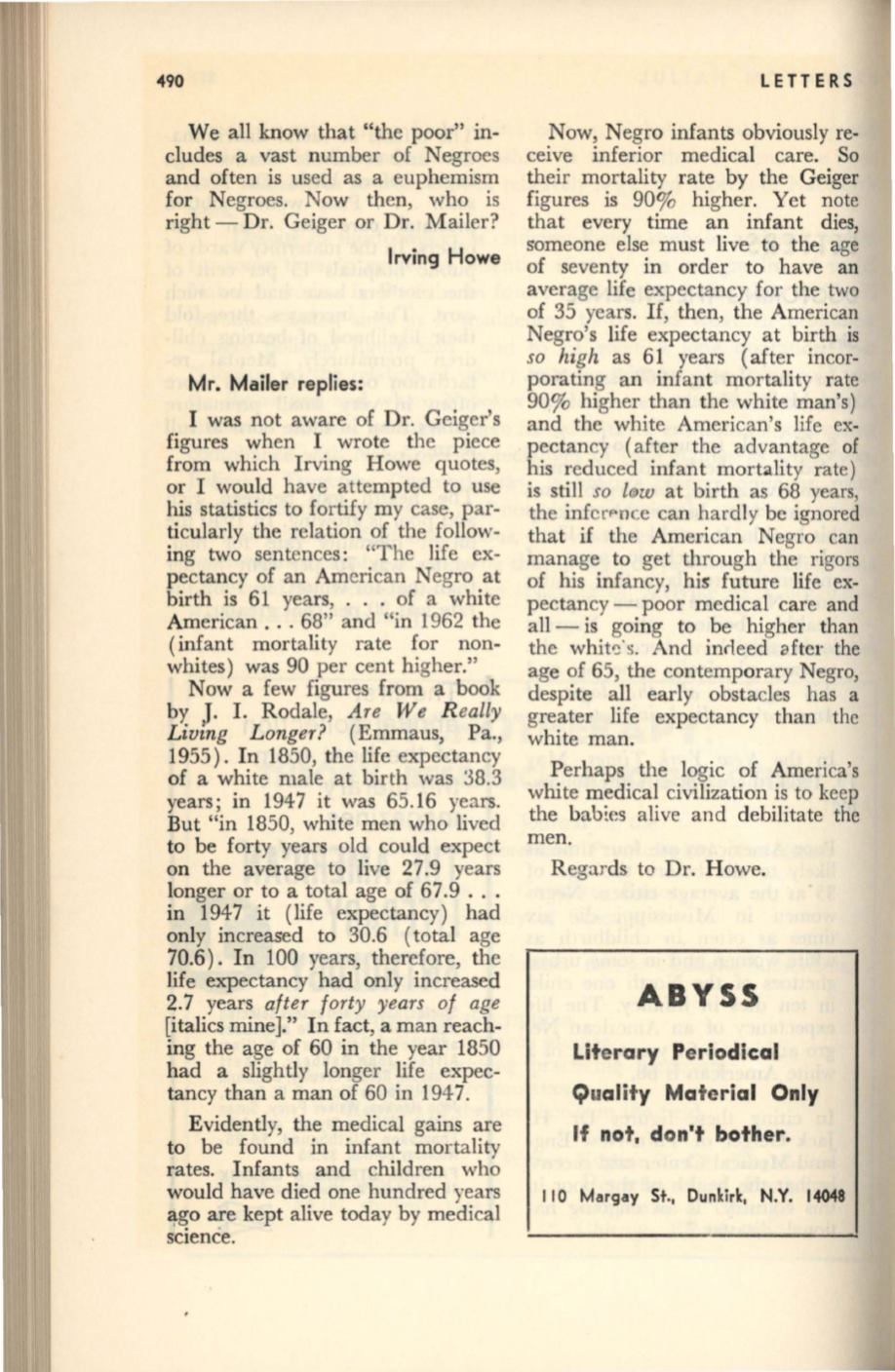
490
We all know that "the poor" in–
cludes a vast number of Negroes
and often is used as a euphemism
for Negroes. Now then, who is
right - Dr. Geiger or Dr. Mailer?
Irving Howe
Mr. Mailer replies:
I was not aware of Dr. Geiger's
figures when I wrote the piece
from which Irving Howe quotes,
or I would have attempted to use
his statistics to fortify my case, par–
ticularly the relation of the follow–
ing two sentences: "The life ex–
pectancy of an American Negro at
birth is 61 years, ... of a white
American ... 68" and "in 1962 the
(infant mortality rate for non–
whites) was 90 per cent higher."
Now a few figures from a book
by
J.
I. Rodale,
Are We R eally
Living Longer?
(Emmaus, Pa.,
1955). In 1850, the life expectancy
of a white male at birth was :38.3
years;
in
1947
it
was 65.16 years.
But "in 1850, white men who lived
to be forty years old could expect
on the average to
live
27.9 years
longer or to a total age of 67.9 ...
in 1947 it (life expectancy) had
only increased to 30.6 (total age
70.6). In 100 years, therefore, the
life expectancy had only increased
2.7 years
after forty years of age
[italics mine
J."
In fact, a man reach–
ing the age of 60 in the year 1850
had a slightly longer life expec–
tancy than a man of 60 in 1947.
Evidently, the medical gains are
to be found in infant mortality
rates. Infants and children who
would have died one hundred years
~go
are kept alive today by medical
science.
LETTERS
Now, Negro infants obviously re–
ceive inferior medical care. So
their mortality rate by the Geiger
figures is 90% higher. Yet note
that every time an infant dies,
someone else must live to the age
of seventy in order to have an
average life expectancy for the two
of 35 years.
If,
then, the American
Negro's life expectancy at birth is
so high
as 61 years (after
incor–
porating an infant mortality rate
90% higher than the
white
man's)
and the
white
American's life ex–
pectancy (after the advantage of
his reduced infant mortality rate)
is still
so l@w
at birth as 68 years,
the infcrpnce can hardly be ignored
that if the American Negro can
manage to get through the rigors
of his infancy, his future
life
ex–
pectancy - poor medical care and
all - is going to be higher than
the whit<:·s. And inneed cfter the
age of 65, the contemporary Negro,
despite all early obstacles has a
greater life expectancy than the
white man.
Perhaps the logic of America's
white medical civilization is to keep
the
bab~es
alive and debilitate the
men.
Regards to Dr. Howe.
ABYSS
Literary Periodical
Quality Material Only
If not, don't bother.
I 10 Margay St., Dunkirk, N.Y. 14048


